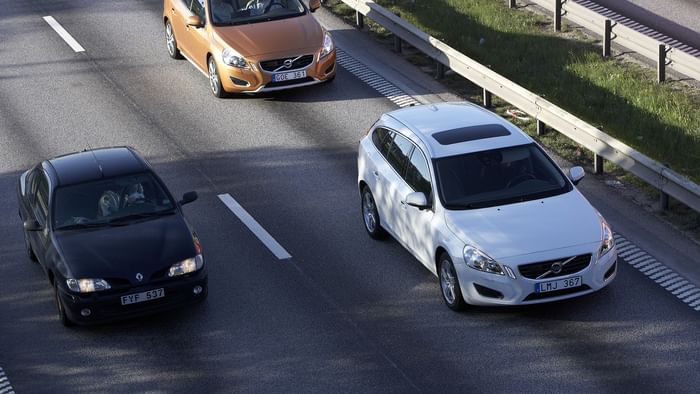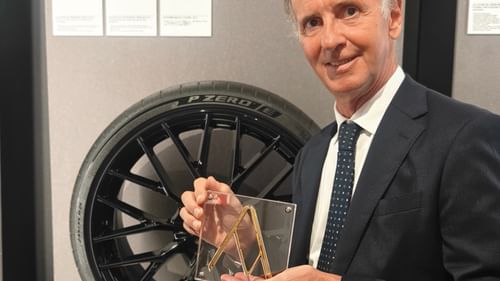
You know the feeling. You’re finally off the motorway, free of the lorries and middle-lane hoggers, and you’ve got a decent bit of road ahead. The scenery’s rolling, the corners are flowing and you’re making actual progress. Then it happens: the car in front keeps braking.
Not slamming on, just gently flashing those brake lights like a nervous learner. Downhill? Flash. Gentle bend? Flash. Nothing ahead at all? Still flashing. You start to question your life choices. Or theirs.
But before you start drafting a passive-aggressive tweet or muttering something best left between you and your passenger, take a look at what’s in front of you. There’s a good chance it’s not a dodgy driver at all. It’s a hybrid. Or a plug-in hybrid. Or, worse still for your blood pressure, an EV.
And they might not be braking at all. Their car is.
Regenerative braking: Slowing down to charge up
In the old days, taking your foot off the throttle usually just meant coasting or a gentle slowdown. Maybe a bit of engine braking if you were feeling thrifty. Now? In a hybrid or EV, lifting off the accelerator often triggers regenerative braking. That’s when the electric motor flips roles, acting as a generator to convert kinetic energy back into electricity. This charges the battery while also slowing the car down. Clever stuff. Efficient. Quiet. Possibly a bit smug. And rather good at confusing the driver behind you.
Why? Because most cars are programmed to flash the brake lights whenever regenerative braking hits a certain deceleration threshold – even if the brake pedal hasn’t been touched. So while it looks like the driver in front is riding the brakes like they’re about to reverse into a parking space, they’re actually just coasting. Technologically. Braking, but not braking. Schrödinger’s brake pedal.

One-pedal driving and other confusions
Take things a step further and you get one-pedal driving. This is where regen is so aggressive that lifting off the throttle brings the car to a complete stop – no brake pedal required, as Phil Collins nearly said. The Nissan Leaf was an early pioneer. Now pretty much every EV has some flavour of it. And that’s great if you’re inside the car doing it. To the person behind, it looks like you’ve just had a minor panic attack on a downhill stretch. Especially when it happens every time you ease off.
Some cars let you adjust the regen level (hello, Renault Rafale paddles), others default to ‘full regen all the time, deal with it’. Either way, the end result is a lot of blinking brake lights and a growing queue of confused drivers wondering what’s going on.
But why the brake lights?
Because rules. Specifically, road safety regulations (and manufacturers covering their bottoms). If a car decelerates above a certain rate – whether by physical brakes or not – it must trigger the brake lights. It’s all about alerting the driver behind. The fact it also triggers minor road rage is, presumably, a bonus.
In many EVs, this threshold is set conservatively. Some even flash the brake lights when you’re coasting gently downhill. It’s like the car’s yelling, “I’m slowing! Just so you know! Please don’t sue us!”
A farewell to engine braking?
Remember engine braking? That satisfying sensation of downshifting into third and letting the engine do the work, like a mechanical parachute? That’s still a thing if you’re in a proper, Petrolbloggy car. But regenerative braking has largely replaced it in the world of battery-powered motoring.
There’s no heel-and-toe, no throttle blip, no drama. Just silent deceleration and a little jolt of smugness as electrons flow gently back into the battery. It's efficient. It’s clever. And it’s about as romantic as a smart meter.

So what’s the answer?
If you’re driving behind a car that seems obsessed with its brake lights, take a breath. Look at the badge. If it says Hybrid, Plug-in, EV or anything else that sounds like a brand of toothpaste, odds are it’s not the driver’s fault. It’s the tech.
If you’re in the EV or hybrid, maybe take a second to consider how your regen is set up. If you’ve got multiple levels, drop it down when you’re on a flowing road. Or don’t – it’s your range to preserve, after all. Just know that the Ford Fiesta behind you probably thinks you’re trying to start a fight.
A final Petrolblog sigh
Progress is great. Cleaner, more efficient cars are good. But there’s something a little sad about living in a world where even slowing down is managed by software, regulations and a flurry of nervous brake lights. Once, a lift-off meant a subtle shift in tone, a touch of engine resistance, a moment of balance. Now, it’s a flashing warning and a digital tally of recovered kilowatts.
It’s not wrong. It’s just... different. And possibly a bit annoying if you’re stuck behind it on a perfectly good B-road.
Main photo © David Weddle/iStock; Regenerative pedal photo © Kia; other image © Volvo, because it features a Renault Mégane Coupé.





